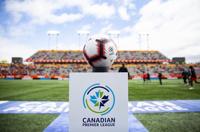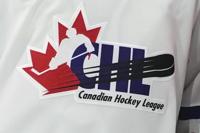CALGARY - Hockey Canada has identified some of the challenges it faces in reaching its goal of having more than 170,000 girls and women playing hockey in Canada by 2030.
That's up from more than 100,000 women and girls registered by Hockey Canada this year to play in sanctioned hockey programs.
But a discussion paper released Tuesday cites a list of barriers, identified through research from Hockey Canada, its members and ��ɫtv Women and Sport, that are negatively affecting the growth and potential of women’s and girls’ hockey in Canada.
They include education and training, policy and governance, structure and equity in resource allocation.
"One day, we hope no girl is kept from participating in hockey because of gender-based barriers," says the discussion paper titled Building the Future of Women's and Girls' Hockey. "However, success depends on our ensuring the ��ɫtv hockey system is prepared to continue to support this unprecedented growth.
The reality is, as it is set up today, it is not. But that isn’t to say it cannot evolve."
In the 2023-24 hockey season, there were 108,313 women and girls registered as players in Hockey Canada-sanctioned programs, which represented 19.9 per cent of all participants — the highest percentage in ��ɫtv hockey history.
But compared to boys and men, data shows that girls and women playing hockey in Canada play for fewer years and have a poorer year-over-year retention rate.
The average length in hockey for girls and women is 7.24 years, which is more than 2.4 years less than boys and men, and in the 2023-24 season, the retention rate for girls and women was 84.9 per cent, 2.9 per cent lower than boys and men.
In May, Hockey Canada announced the formation of a committee chaired by former national team player Gillian Apps, "to oversee a discussion paper that will lead to formal recommendations to guide the organization’s next women’s and girls’ hockey strategic plan."
The 15-person committee includes former players Cassie Campbell-Pascall, Kim St-Pierre, Jayna Hefford, Angela James and Therese Brisson, Hockey Canada president and CEO Katherine Henderson, U-Sports CEO Pierre Arsenault, NHL senior vice-president Rob Knesaurek, Bauer Hockey vice-president Mary-Kay Messier, and Own the Podium CEO Anne Merklinger among others.
Apps is a member of Hockey Canada's board.
The next step is public consultation, via a survey to help the committee "determine its formal recommendations to ensure that by 2030, the ��ɫtv hockey system will welcome the more than 170,000 women and girls we intend to have playing hockey.
That will involve feedback from athletes, coaches, officials, administrators, volunteers and fans.
Recommendations will be made public in the first half of 2025 "and help inform Hockey Canada’s — and Canada’s — next women’s and girls’ hockey strategic plan."
Issues identified include:
— There are more than 2,800 boards governing hockey in Canada, causing "inconsistencies with governance and program delivery."
— Stereotypes remain that women’s and girls’ hockey is not as competitive as the game is for men and boys.
— A lack of guidance from Hockey Canada and its members on how associations should be managing women’s and girls’ hockey, "which has reinforced local attitudes in some areas of the country that the sport does not need to be resourced as appropriately as men’s and boys’ hockey."
— While improvements have been made, the lack of diversity on boards and in decision-makers in hockey "continues to limit the sport’s potential at all levels."
— Despite women and girls representing almost 20 per cent of all participants in Hockey Canada-sanctioned programs, the sport is often not allocated the same resources as men’s and boys’ teams, including ice time, funding, staffing, equipment and coverage.
— There is no specific education or training module for women and girls playing hockey in Canada, nor are there standard resources provided to administrators, coaches and volunteers.
— Limited and inconsistent injury prevention education designed specifically for girls playing hockey has led to fewer girls staying in hockey, and sport in general.
— Although not unique to the women’s game, cost remains a consistent barrier to entry for too many ��ɫtvs who face challenges with rising registration fees, equipment and travel expenses.
---
This report by ��ɫtvwas first published Oct. 22, 2024








































